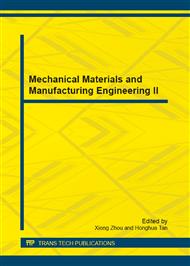p.20
p.26
p.31
p.37
p.43
p.48
p.54
p.60
p.69
Microstructure Evolution in Bulk Nanostructured Copper during Repeated Cold Rolling
Abstract:
Room temperature rolling tests were performed on a bulk nanostructured Cu with an average grain size of 90 nm. The results indicated a high thickness reduction ( ) of 92% without crack and an increased {220} texture as the rolling processes continued. Microstructure evolution of the deformed nanostructured Cu could be characterized by several deformation stages. Grain growth and coalescence was prevalent in the early deformation stage, while grain boundaries were impaired and replaced by dislocation interactions when 24%. Microhardness of the deformed nanostructured Cu increased sharply to a maximum value of 1.61 GPa at 8% and then slightly decreased to 1.58 GPa at 92%.
Info:
Periodical:
Pages:
43-47
Citation:
Online since:
December 2012
Authors:
Keywords:
Price:
Сopyright:
© 2013 Trans Tech Publications Ltd. All Rights Reserved
Share:
Citation:


